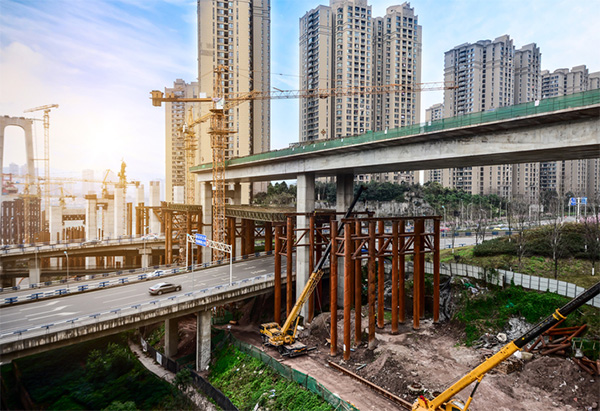Growing U.S. infrastructure deficit necessitates a new paradigm, Fitch Ratings maintains
The American Association of Port Authorities also registered strong concerns over significant declines to other federally funded, port-related programs when compared against this year's appropriation funding levels.
Any government plan for renewing and advancing essential US infrastructure requires a new paradigm to adequately address the infrastructure funding deficit, says Fitch Ratings.
While a source of adequate and sustainable funding is a critical component, a results-oriented, objective and strategic approach to investment, along with responsible stewardship of the public purse, are paramount. Increased spending without a strategic, comprehensive approach to infrastructure investment based on national priorities will not go far in addressing the continued deterioration of critical economic assets.
Passage of a large-scale federal infrastructure spending bill stalled in 2019 due to a lack of consensus on a funding approach, despite bipartisan recognition of the need to address the country's aging infrastructure.
Political disagreements partially reflect difficult budget decisions, which will need to be made in the context of a federal deficit that is projected to reach $1.0 trillion this fiscal year. Trying to tackle the issue in a presidential election year will be next to impossible.
In a related development, the American Association of Port Authorities (AAPA), welcomed support in President Trump’s fiscal 2021 budget for two vital U.S. Department of Transportation (USDOT) competitive infrastructure grant initiatives, known as BUILD and INFRA.
However, the association registered strong concerns over significant declines to other federally funded, port-related programs when compared against this year's appropriation funding levels.
“We’re very apprehensive about the President’s fiscal 2021 budget,” said Chris Connor, AAPA president and CEO. “Adequate federal investments into U.S. port-related infrastructure, on the landside and the waterside, are crucial for the safe, efficient movement of goods so the nation can remain globally competitive, and this budget doesn't get us there.”
In a 2016 survey, AAPA found that U.S. ports and their private-sector partners planned to spend approximately $31 billion a year through 2020, provided the infrastructure outside the ports’ jurisdiction, such as roads, rails, bridges, tunnels and navigation channels, would support those investments.
Addressing U.S. infrastructure needs will require a significant uptick in annual new investment. Prior government proposals have been rather tepid, suggesting up to $200 billion in new investment a year. While a good start, it is a drop in the bucket, as a multi-trillion dollar infrastructure deficit will require a glide-path to trillion dollar annual investments at 5% of US GDP and more than double recent historical levels to have a meaningful impact. Direct federal spending on nondefense infrastructure, as a percentage of GDP, declined marginally over the past two years and was less than 0.1% of GDP in 2018.
Investments in infrastructure have historically led to increased economic activity and growth. The risk of putting off investment is obvious: infrastructure assets, which are essential to the U.S. economy, will continue to deteriorate, requiring even greater financial resources down the line and making the problem even more difficult to address. Slowing GDP growth will compound this risk, making increased investment less feasible. The irony is that the ability to invest is strongest when the economy is robust.
Such a large-scale undertaking requires a coordinated effort across multiple stakeholders and levels of government to prioritize and fund national needs and provide long-term support for infrastructure renewal. An independent, non-partisan infrastructure commission with the teeth to influence funding and spending may be a useful model to facilitate sustained planning and investment.
With no federal plan currently in place, states and local governments have made efforts to fill the funding gap, including raising gas taxes, using toll revenues for other unrelated projects, or entering into public-private partnerships. State and local spending on infrastructure was about 1.5% of GDP in 2018 but infrastructure needs are too great to address on their own. States and municipalities need funding visibility and assistance to begin work on necessary projects.
Costs associated with repairing and protecting infrastructure will only grow if the funding gap is not addressed systematically. The deficit could be exacerbated with the potential threats to infrastructure from environmental risks such as rising sea levels. Upfront investments to build resiliency would cost less than rebuilding following weather-related events.













